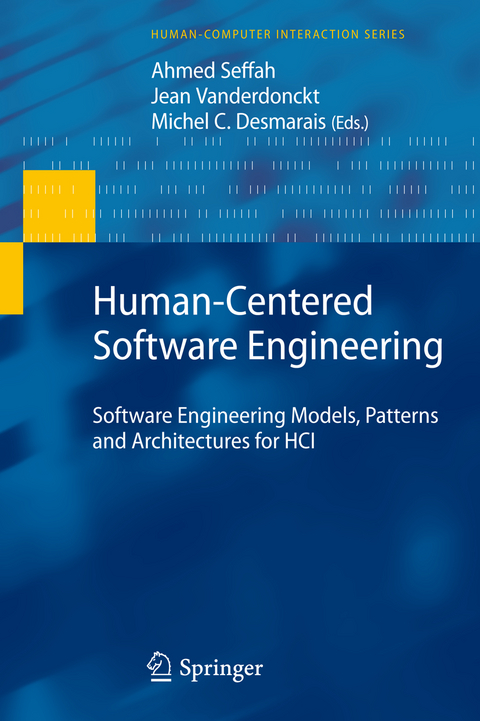
Human-Centered Software Engineering
Springer London Ltd (Verlag)
978-1-84996-803-4 (ISBN)
Human-Centered Software Engineering: Software Engineering Architectures, Patterns, and Models for Human Computer Interaction.- Human-Centered Software Engineering: Software Engineering Architectures, Patterns, and Sodels for Human Computer Interaction.- User Experiences, Usability Requirements, and Design.- What Drives Software Development: Bridging the Gap Between Software and Usability Engineering.- Human Activity Modeling: Toward A Pragmatic Integration of Activity Theory and Usage-Centered Design.- A User-Centered Framework for Deriving A Conceptual Design From User Experiences: Leveraging Personas and Patterns to Create Usable Designs.- XML-Based Tools for Creating, Mapping, and Transforming Usability Engineering Requirements.- Modeling and Model-Driven Engineering.- Multipath Transformational Development of User Interfaces with Graph Transformations.- Human-Centered Engineering Of Interactive Systems With The User Interface Markup Language.- Megamodeling and Metamodel-Driven Engineering for Plastic User Interfaces: MEGA-UI.- Cause and Effect in User Interface Development.- Interactive Systems Architectures.- From User Interface Usability to the Overall Usability of Interactive Systems: Adding Usability in System Architecture.- Toward a Refined Paradigm for Architecting Usable Systems.- Trace-Based Usability Evaluation Using Aspect-Oriented Programming and Agent-Based Software Architecture.- Achieving Usability of Adaptable Software: The Amf-Based Approach.- Reengineering, Reverse Engineering, and Refactoring.- The Gains Design Process: How to do Structured Design of User Interfaces in Any Software Environment.- Legacy Systems Interaction Reengineering.- Using Reverse Engineering for Automated Usability Evaluation of Gui-Based Applications.- Task Models and SystemModels as A Bridge Between Hci and Software Engineering.
| Reihe/Serie | Human–Computer Interaction Series |
|---|---|
| Zusatzinfo | XXX, 398 p. |
| Verlagsort | England |
| Sprache | englisch |
| Maße | 155 x 235 mm |
| Themenwelt | Mathematik / Informatik ► Informatik ► Betriebssysteme / Server |
| Informatik ► Software Entwicklung ► User Interfaces (HCI) | |
| ISBN-10 | 1-84996-803-9 / 1849968039 |
| ISBN-13 | 978-1-84996-803-4 / 9781849968034 |
| Zustand | Neuware |
| Haben Sie eine Frage zum Produkt? |
aus dem Bereich


